Understanding the Metaverse: How Virtual Trade Fairs Are Transforming Business
The concept of the Metaverse has been gaining substantial ground within the digital world, presenting innovative landscapes for human interaction. At its core, the Metaverse is a collective virtual space, created by the convergence of virtually enhanced physical spaces and the digital environment. Businesses are now beginning to harness the power of this new frontier, especially through the advent of virtual trade fairs. These events have emerged as pivotal tools, redefining the essence of networking, showcasing, and conducting commerce in a digitally-mediated marketplace.
Expanding Reach and Accessibility
One of the most significant impacts of virtual trade fairs in the Metaverse is their global reach. Traditionally, geographical and logistical constraints limited the attendance of physical trade shows. However, virtual fairs transcend these limitations by offering a venue that is accessible to participants from any location, provided they have internet connectivity. This unparalleled accessibility elevates a company’s potential to showcase their products and services to a broader audience, transcending borders and barriers to entry.
Cutting Costs, Elevating Experiences
In addition to enhanced reach, virtual trade fairs deliver substantial cost savings for both organizers and attendees. The reduction in costs associated with venue hire, physical booth setup, travel, and accommodation allows for a higher investment in the creation of immersive and engaging virtual experiences. Utilizing technologies such as VR (Virtual Reality) and AR (Augmented Reality), businesses can create captivating 3D product demonstrations and interactive sessions that rival their physical counterparts, without the hefty price tag.
Fostering Sustainable Trade Practices
Virtual trade fairs not only bring economic advantages, but they are also an environmentally friendly alternative to traditional events. By minimizing the need for physical infrastructure and reducing travel, these virtual gatherings significantly lower the carbon footprint associated with large-scale business events. This shift towards sustainable trade practices is not only a responsible choice for the planet but also aligns with the growing consumer demand for eco-conscious business operations.
Through the Metaverse, businesses are discovering a revolutionary medium where the value of connecting, engaging, and trading can be harnessed with unprecedented scale and efficiency. Virtual trade fairs are just the beginning of understanding how this new domain will continue to transform the landscape of business for years to come.
The Benefits of Hosting and Attending Trade Fairs in the Metaverse
Welcome to a new horizon for industry events. The Metaverse has redefined what it means to congregate, share, and explore in a trade fair environment. In this virtual sphere, the borders that once confined business networking to physical spaces are dissolved, offering a plethora of benefits to both hosts and attendees. Let’s delve into the myriad of advantages these virtual trade fairs can supply.
Expanded Global Reach and Accessibility
Hosting a trade fair in the Metaverse inherently tears down geographical barriers, inviting a global audience to partake with ease. Attendees are no longer bound by travel limitations, making the event accessible to a diverse international crowd. This not only amplifies networking opportunities but also enriches cultural exchanges and market penetration.
Cost-Effective and Environment Friendly Solutions
Conducting an event virtually in the Metaverse sidesteps the heavy costs associated with physical venues, travel, and accommodation. This renders trade fairs financially viable for both organizers and participants. Moreover, the reduction in travel and physical infrastructure implies a smaller carbon footprint, making these events more environmentally sustainable.
Immersive and Interactive Experiences
Interactive booths, live presentations, and demos in the Metaverse can be made deeply immersive with the aid of cutting-edge technology. Attendees gain a spatial presence within the events, navigating through a three-dimensional space that emulates the essence of a physical trade fair while benefiting from the lack of physical constraints.
Innovative Networking and Engagement Mechanisms
The integration of virtual reality (VR) and artificial intelligence (AI) in the Metaverse elevates conventional networking. These tools allow for sophisticated interaction methodologies, such as virtual business card exchanges, AI-driven meetups, and real-time language translation, which enhance the networking experience beyond traditional means.
Preparing for Success: Strategies for Exhibitors at Virtual Trade Fairs in the Metaverse
Understanding the Virtual Environment: Familiarizing Yourself with the Metaverse
Exhibitors looking to capture attention at a virtual trade fair must first understand the environment they’re entering. The Metaverse presents a new realm of possibilities, combining the visual appeal of virtual reality with the connectivity of social media platforms. Begin by exploring various virtual trade fair platforms to experience how users interact within these spaces. Pay close attention to the functionality of avatars, the ease of navigation, and the types of content that resonate most with attendees. Familiarity with the virtual setting can not only boost confidence but also help you better tailor your booth and presentations to the expectations of a metaverse audience.
Interactive Elements to Engage Your Virtual Booth Visitors
Interactive elements are the cornerstone of engagement in the Metaverse. Consider incorporating interactive features such as live chat, virtual product demos, and real-time Q&A sessions into your booth design. This will not only encourage participation but also provide a memorable experience that stands out among the plethora of exhibitors.
Optimizing Your Virtual Booth for Maximum Engagement
Once you’re well-versed with the virtual space, the next step is to create a captivating virtual booth. Start with a design that is visually appealing and reflective of your brand’s identity. Use high-quality graphics and videos to showcase your products or services. Remember that in the Metaverse, your booth isn’t limited by physical constraints, so let your creativity flow.
Strategic Content Placement
- Place your most important information at eye-level where it can easily catch an attendee’s attention.
- Include clear, concise descriptions and use bold formatting for keywords to improve readability.
- Utilize bullet points for features and benefits to help break down complex information.
Incorporating elements of gamification such as quizzes or virtual scavenger hunts can also drive engagement. These activities can be both entertaining and informative, leaving a lasting impression on participants.
Leveraging Social Media and Networking Tools
No virtual trade fair strategy is complete without considering the power of social media and networking tools. Before the event, build excitement and awareness by sharing sneak peeks of your virtual booth and what visitors can expect. During the fair, actively participate in forum discussions to enhance your visibility. You can also host live sessions on platforms such as LinkedIn or Facebook to complement your presence in the Metaverse and direct traffic to your virtual booth. Post-event, continue the conversation by sharing highlights and reaching out to new connections made during the trade fair.
Making Meaningful Connections Virtually
Networking in the Metaverse doesn’t have to be a challenge. Encourage visitors to leave their digital business cards or connect on professional networks. This not only helps build your contact list but also fosters relationships with potential clients or partners beyond the virtual space.
Monitoring Performance and Analyzing Data
Lastly, exhibitors must not overlook the importance of analytics. The Metaverse provides a unique opportunity to track visitor interactions more precisely than at a physical event. Set up tracking for various aspects of your booth, such as the number of visits, the duration of stays, and the interactions with different elements. Post-event data analysis will offer invaluable insights into what worked well and what could be improved. Make sure to leverage these metrics for refining future trade fair strategies and improving the effectiveness of your virtual presence.
Key Performance Indicators (KPIs) to Watch
- Visitor numbers: a high count indicates strong interest in your booth.
- Engagement time: a longer duration signifies a more captivating experience.
- Interactions per visitor: this shows the level of engagement with your content.
By understanding the dynamics of the Metaverse, optimizing your booth for engagement, networking through social media, and analyzing performance data, you can prepare for a successful virtual trade fair. These strategies will not only enhance your current experience but set a foundation for success in future digital events.
Attendee’s Guide: Maximizing Your Experience at Metaverse Trade Fairs
Understanding the Metaverse Environment
Welcome to the ever-expanding world of Metaverse trade fairs! Before diving into the vibrant digital marketplace, it’s crucial to acquaint yourself with the virtual environment. Firstly, ensure your hardware is up to snuff to handle the platform’s requirements — a decent headset and a capable device are instrumental. Once technical preparations are ticked off, familiarizing with navigation and interaction within the virtual space is key. You’ll be interacting with booths, attending presentations, and networking in a 3D realm. Practice beforehand so once the event starts, you’ll move through the digital corridors with ease.
Hardware Requirements and Software Setup
- Virtual Reality Headset: Essential for an immersive experience.
- High-Speed Internet: Trade fairs involve high-data interactions.
- Device Compatibility: Check if your device supports the Metaverse platform.
Navigating the Virtual Landscape
- Master the controls to seamlessly explore virtual stands and areas.
- Engage in simulations or tutorials offered by the platform to enhance your navigation skills.
- Understand how to use the chat and interaction features to communicate with other attendees.
Strategies for Effective Networking
Networking is a cornerstone of any trade fair, and Metaverse events turn the dial up with their digital capabilities. Make your presence felt by creating an impressive and professional avatar. Your virtual representation can break the ice, so ensure it conveys the correct image. Next, leverage the various networking tools provided — connect on live chats, schedule private meetings, or join community discussions. Spark conversations by sharing insights and asking questions, and don’t forget to exchange contact information for post-event follow-ups.
Creating Your Digital Persona
- Design an avatar that aligns with your professional brand.
- Keep your virtual business card ready to share with new connections.
Making the Most of Networking Tools
- Participate actively in discussions and roundtables.
- Use direct messaging features to establish one-on-one connections.
- Follow up with your new contacts within a few days post-event.
Engaging with Exhibitors and Presentations
To maximize your trade fair experience, engaging with exhibitors is vital. Start by researching the companies and speakers beforehand to strategize your visit. During the event, take advantage of live demo sessions where you can learn about new products or services in real-time. Ask questions or request more information when interested. Keep an agenda with the schedule of presentations you desire to attend to manage your time effectively. Remember, these presentations are fantastic opportunities to gain industry insights and identify upcoming trends.
Doing Your Homework
- Review the list of exhibitors and presenters before the event.
- Identify key products, services, or talks that align with your interests or needs.
Interactive Sessions and Time Management
- Engage in demonstrations and ask thought-provoking questions.
- Plan your day around the presentations and demos that are most beneficial to you.
Future Trends: The Evolution of Virtual Trade Fairs in the Metaverse and Beyond
As we leap into a future where digital spaces transcend traditional boundaries, the concept of virtual trade fairs has gained strong momentum. The traditional trade fair, once a staple of industry networking and product showcases, is undergoing a remarkable transformation. The rise of the metaverse – a collective virtual shared space created by the convergence of virtually enhanced physical reality and physically persistent virtual space – is revolutionizing the way businesses connect, display, and interact.
Embracing the Metaverse for Business Growth
While physical trade shows often require significant resources for setup and attendance, virtual trade fairs in the metaverse offer cost-effective and eco-friendly alternatives. Navigating these immersive 3D environments, exhibitors and attendees can engage in real-time, unhindered by geographical limitations. Interactive stands and live demonstrations are virtually replicated, offering a tangible experience that parallels the physical counterpart. The metaverse unlocks new potential for brand expansion, audience engagement, and customized experiences catering to individual visitor interests.
Advanced Technologies Shaping the Future of Trade Fairs
- Virtual Reality (VR): VR technology is crucial to the evolution of trade fairs. It allows for full immersion within the virtual environment, enabling visitors to feel as though they are physically present at the event.
- Augmented Reality (AR): AR enhances the viewing experience by superimposing virtual elements over the real world. In a trade fair context, this could mean interactive product displays or live data integrations.
- Artificial Intelligence (AI): AI can personalize attendee experience through intelligent recommendation systems, chatbots for customer service, and predictive analytics to help businesses tailor their offerings.
Integration of these technologies into the metaverse showcases helps us anticipate a paradigm shift in networking and sales strategies. Companies that adapt to these trends stand to gain a competitive edge, leveraging the metaverse for more engaging, innovative, and inclusive trade fairs.
Redefining Social Interactions and Networking Opportunities
The metaverse is not just revolutionizing the business side of trade fairs but is also redefining the social aspects. It provides a platform for seamless social interactions that transcend geographical barriers, fostering a sense of community and shared purpose. Networking in the metaverse goes beyond exchanging business cards; it enables enduring connections through avatars, shared experiences, and collaboration in a way that mirrors face-to-face interactions.
Moving forward, as technology evolves and our digital capabilities expand, trade fairs within the metaverse are set to become more dynamic, inclusive, and pervasive. This digital evolution reshapes the landscape of business interactions, emphasizing the value of adaptation and innovation in an increasingly virtual world. As the metaverse grows, we are likely to witness a blend of the physical and digital realms, creating a new normal for commercial engagements and exhibiting practices.

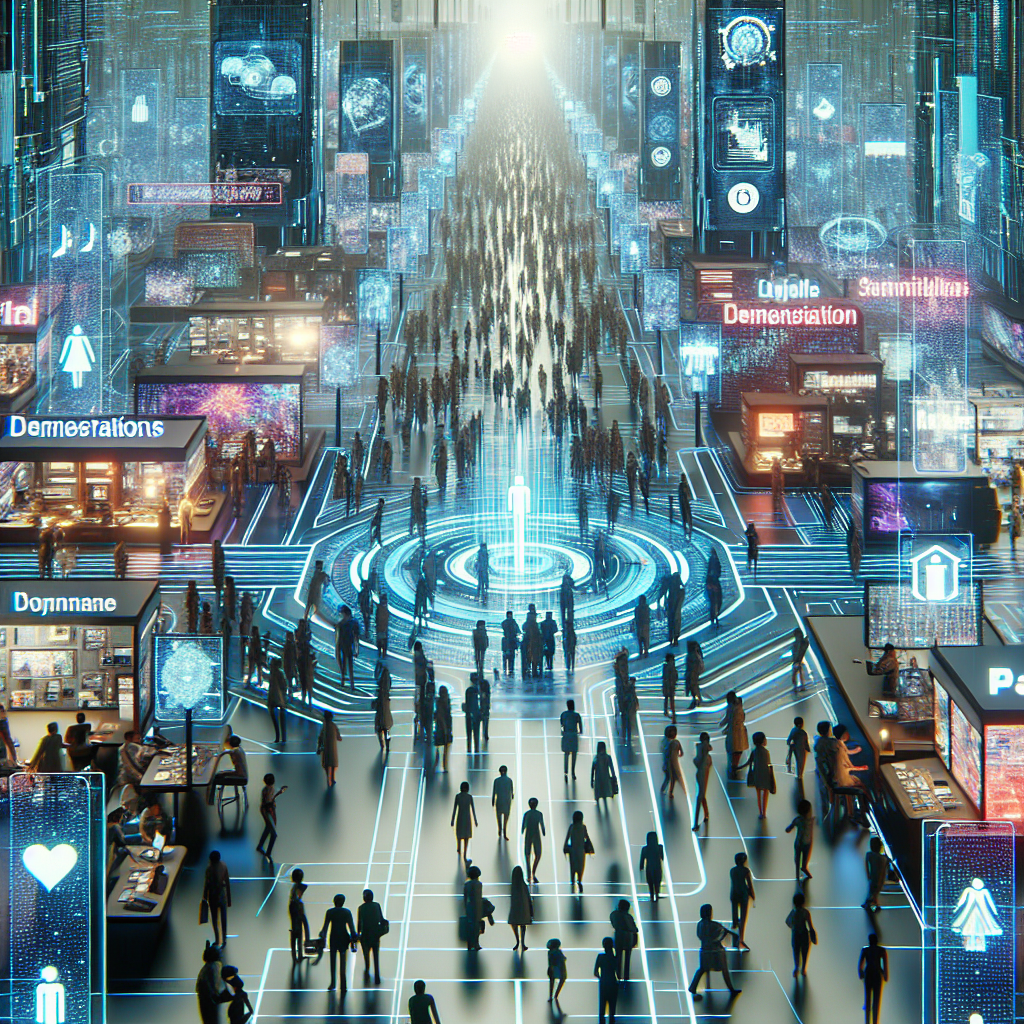



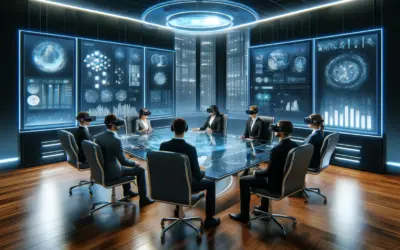
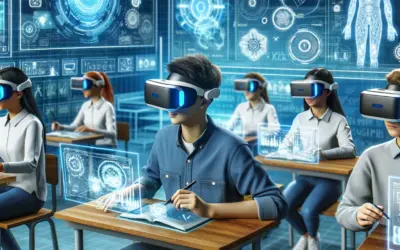
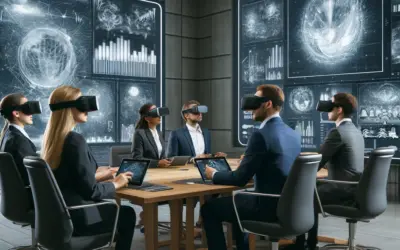

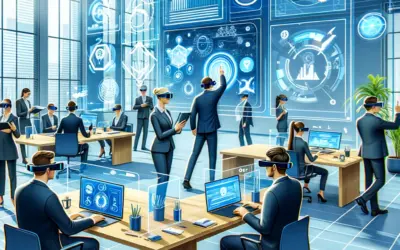

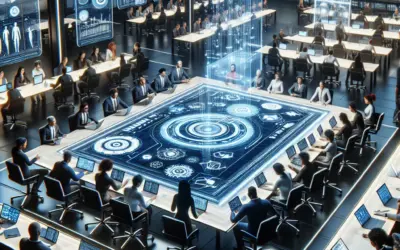
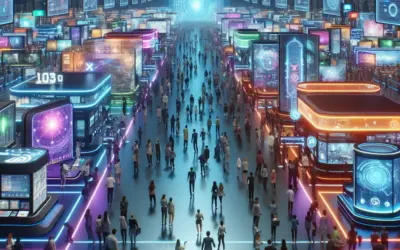
0 comentarios